August 22, 2025 by 100XBuilds Team
AI Integration Guide for Home Builders: 12-Month Roadmap
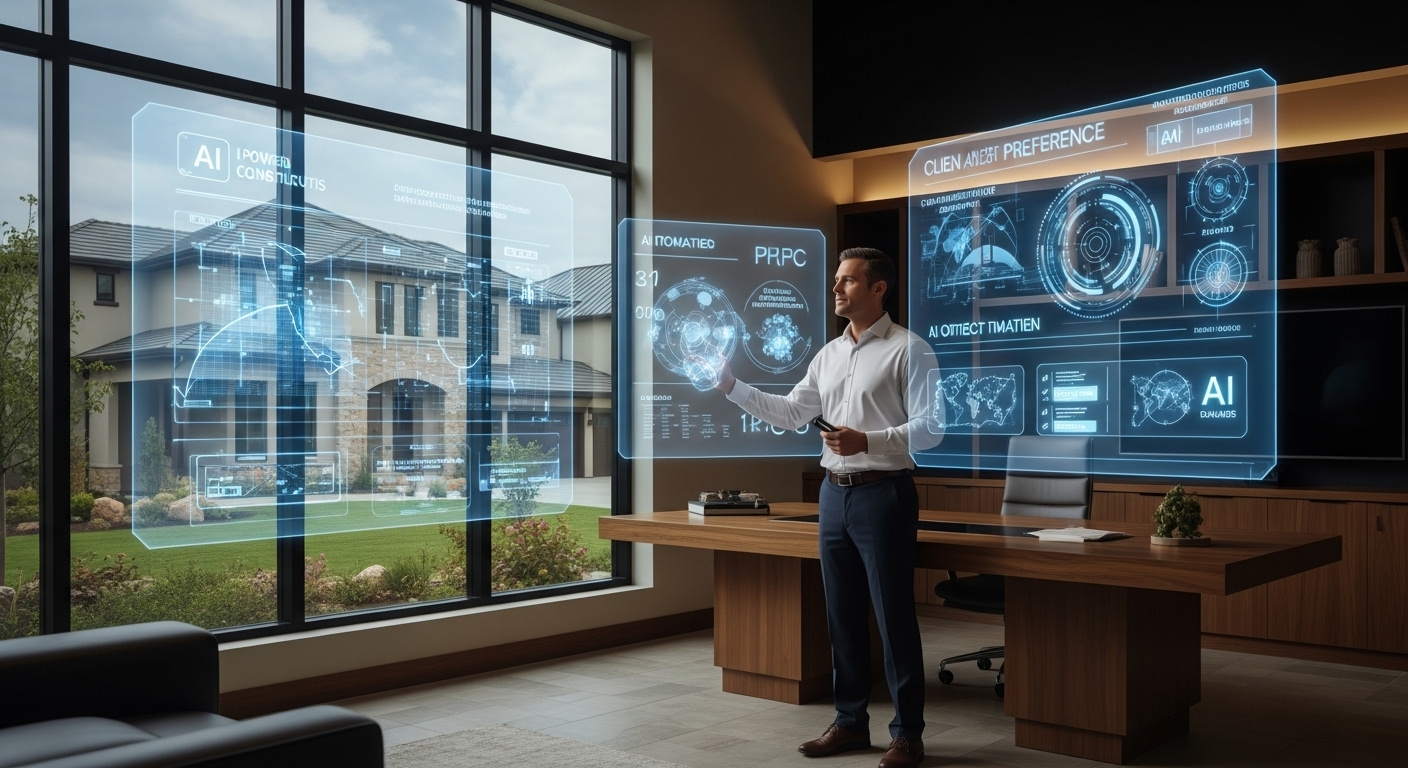
A $12M custom home builder in Austin reduced project delays by 47% and increased client satisfaction scores to 9.2/10 after implementing AI-driven project management and predictive analytics. Their secret? A comprehensive AI integration roadmap that transformed every aspect of their operation from initial client consultation to final walkthrough.
The luxury home building industry stands at an inflection point. While artificial intelligence revolutionizes industries from healthcare to finance, most custom builders still rely on decades-old processes, spreadsheets, and gut instinct. The builders who embrace AI integration now will dominate the next decade—those who don't will become obsolete.
The AI Advantage: Why Now Is Your Moment
The numbers don't lie. Builders implementing AI solutions report:
- 34% reduction in change orders through predictive client preference modeling
- 28% faster permit approval via AI-powered document preparation
- 52% improvement in subcontractor scheduling efficiency
- $180,000 average annual savings on projects exceeding $2M

But here's what separates winners from wannabes: successful AI integration isn't about adopting every shiny new tool. It's about strategically implementing AI where it delivers maximum ROI while enhancing—not replacing—your human expertise.
Phase 1: Foundation AI Systems (Months 1-3)
Client Intelligence Platform
Start with what matters most: understanding your clients before they even know what they want. AI-powered client intelligence platforms analyze communication patterns, design preferences, and decision-making behaviors to create detailed psychological profiles.
Implementation Strategy:
CRM integration: Connect AI analysis to your existing client database
Communication tracking: Monitor email, text, and call sentiment analysis
Preference mapping: Identify design patterns from client interactions and past projects
Budget optimization: Predict realistic budget ranges based on stated preferences versus actual spending patterns
One $8M builder in Scottsdale uses AI to analyze client Pinterest boards, Instagram activity, and initial consultation recordings. The system identifies whether clients are "detail-oriented perfectionists" or "big-picture visionaries," allowing the sales team to tailor presentations accordingly. Result: 67% increase in contract conversion rates.

Predictive Project Management
Traditional project management reacts to problems. AI-powered systems prevent them. Implement predictive analytics that forecast potential delays, budget overruns, and quality issues before they impact your timeline.
Core Components:
Weather integration: Automatically adjust schedules based on 14-day forecasts and historical weather patterns
Supplier reliability scoring: Track vendor performance and predict delivery delays
Permit processing prediction: Analyze municipal approval patterns to forecast timeline accuracy
Labor availability forecasting: Predict subcontractor availability based on market conditions and seasonal patterns
Phase 2: Advanced Automation (Months 4-8)
Intelligent Design Optimization
AI doesn't replace your architects—it makes them superhuman. Advanced AI systems can generate multiple design variations, optimize for energy efficiency, and ensure code compliance while maintaining your signature aesthetic.
Key Applications:
Space optimization: AI analyzes traffic patterns and lifestyle data to optimize room layouts
Energy modeling: Predictive analysis of HVAC efficiency, natural lighting, and insulation performance
Cost estimation: Real-time material and labor cost calculations as designs evolve
Code compliance checking: Automated review of plans against local building codes and HOA requirements
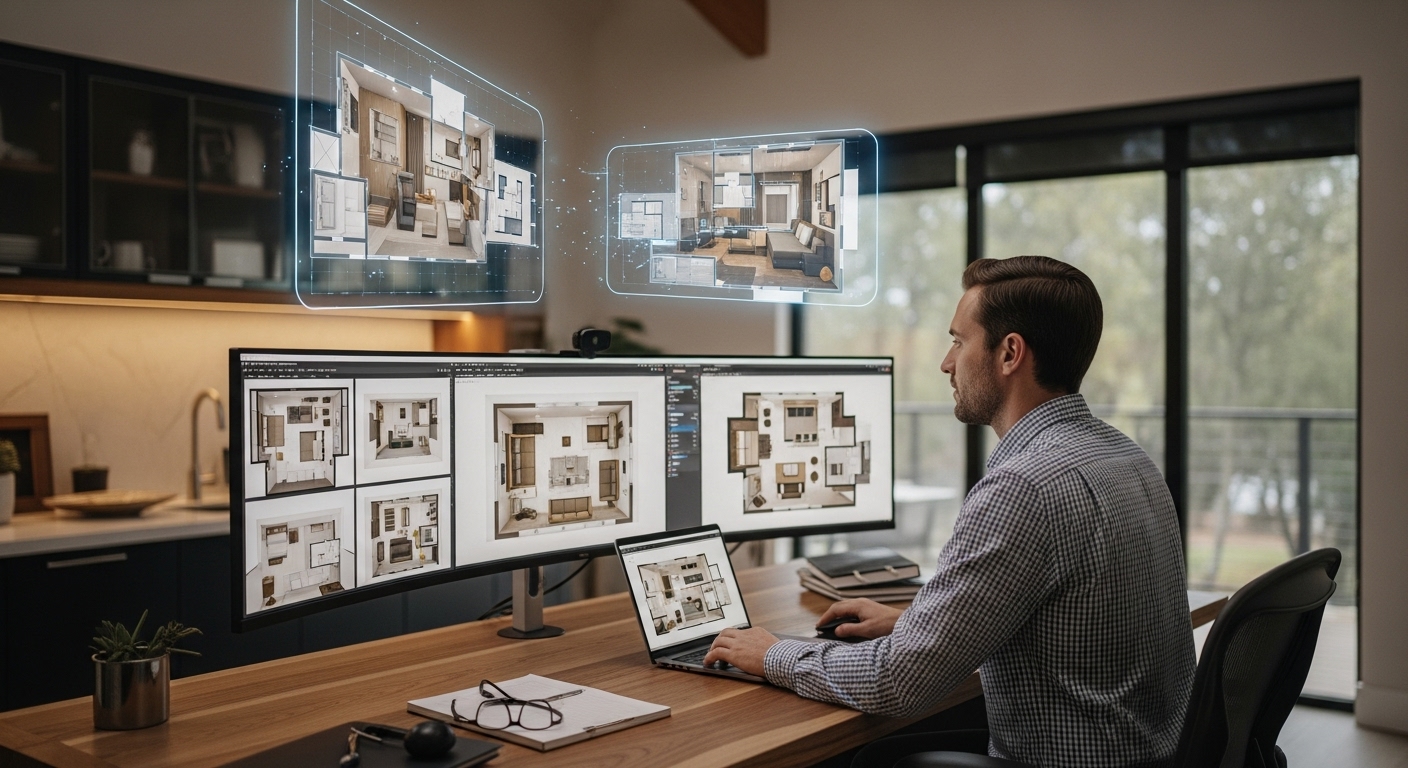
A $15M builder in Naples implemented AI design optimization and reduced their average design revision cycles from 8.3 to 2.1 iterations. More importantly, their energy efficiency ratings improved by 23%, becoming a major selling point for environmentally conscious luxury buyers.
Automated Quality Control
Quality issues cost luxury builders an average of $47,000 per project in rework and reputation damage. AI-powered quality control systems use computer vision and IoT sensors to identify problems before they become expensive mistakes.
Implementation Framework:
Progress monitoring: Drone and camera systems track construction progress against planned timelines
Defect detection: Computer vision identifies potential quality issues in real-time
Material verification: AI confirms correct materials and finishes are installed per specifications
Safety compliance: Automated monitoring of safety protocols and OSHA compliance
Phase 3: Predictive Intelligence (Months 9-12)
Market Intelligence and Lead Scoring
The most successful builders don't just respond to market conditions—they anticipate them. AI market intelligence platforms analyze economic indicators, demographic shifts, and competitor activity to predict demand patterns and optimal pricing strategies.
Strategic Applications:
Lead quality prediction: Score incoming leads based on conversion probability and lifetime value
Market timing optimization: Identify optimal launch timing for spec homes and new developments
Competitive analysis: Monitor competitor pricing, marketing strategies, and project timelines
Economic forecasting: Predict local market conditions affecting material costs and buyer demand

Client Experience Personalization
Luxury buyers expect personalized experiences that anticipate their needs. AI enables mass customization of the client journey, from initial marketing touchpoints through post-construction follow-up.
Personalization Strategies:
Dynamic content delivery: Website and marketing materials adapt based on visitor behavior and preferences
Automated communication sequencing: Personalized email and text campaigns based on project phase and client personality type
Virtual reality customization: AI-powered VR experiences showing personalized design options
Predictive maintenance scheduling: Proactive home maintenance recommendations based on usage patterns and environmental factors
Implementation Roadmap: Your 12-Month AI Transformation
Months 1-2: Assessment and Planning
Technology audit: Evaluate existing systems and integration capabilities
Team training: Identify AI champions and begin education programs
Vendor selection: Research and select AI platform partners
Pilot project identification: Choose initial implementation areas with highest ROI potential
Months 3-4: Foundation Deployment
CRM integration: Implement client intelligence and lead scoring systems
Project management upgrade: Deploy predictive analytics for active projects
Quality control pilot: Begin automated monitoring on select job sites
Performance baseline establishment: Document current metrics for comparison
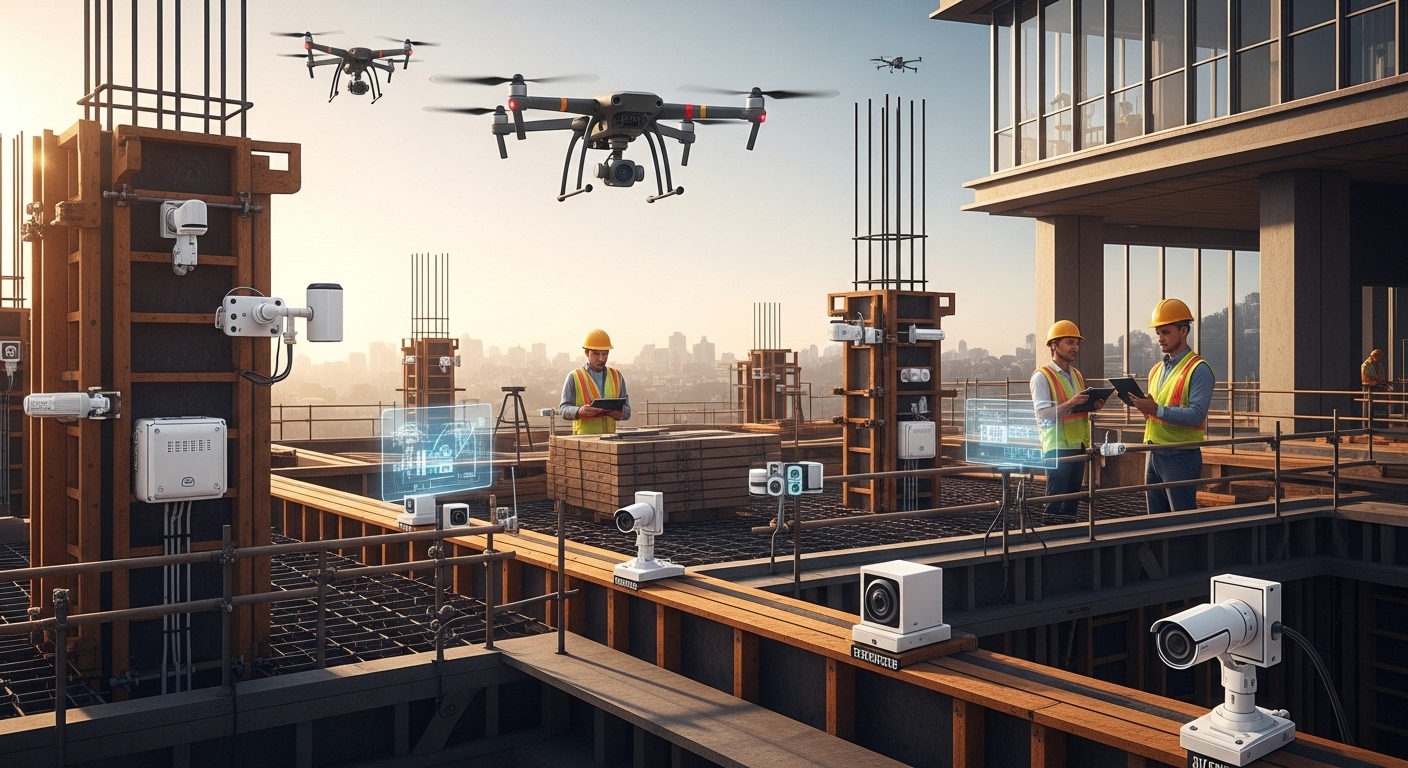
Months 5-8: Advanced System Integration
Design optimization rollout: Integrate AI tools with architectural workflows
Automation expansion: Implement scheduling and resource optimization across all projects
Client experience enhancement: Deploy personalization systems and automated communication
Vendor ecosystem integration: Connect AI systems with key suppliers and subcontractors
Months 9-12: Optimization and Scaling
Performance analysis: Measure ROI and identify optimization opportunities
Advanced feature deployment: Implement predictive maintenance and market intelligence
Team expansion: Scale AI capabilities across all departments
Competitive advantage solidification: Leverage AI insights for strategic planning and market positioning
Measuring AI Success: KPIs That Matter
Track these metrics to ensure your AI investment delivers measurable results:
Operational Efficiency:
- Project completion time variance
- Change order frequency and cost impact
- Subcontractor scheduling accuracy
- Permit approval timeline reduction
Client Satisfaction:
- Net Promoter Score improvement
- Communication response time
- Design revision cycles
- Post-completion satisfaction ratings
Financial Performance:
- Gross margin improvement
- Lead conversion rate increases
- Average project value growth
- Cost overrun reduction
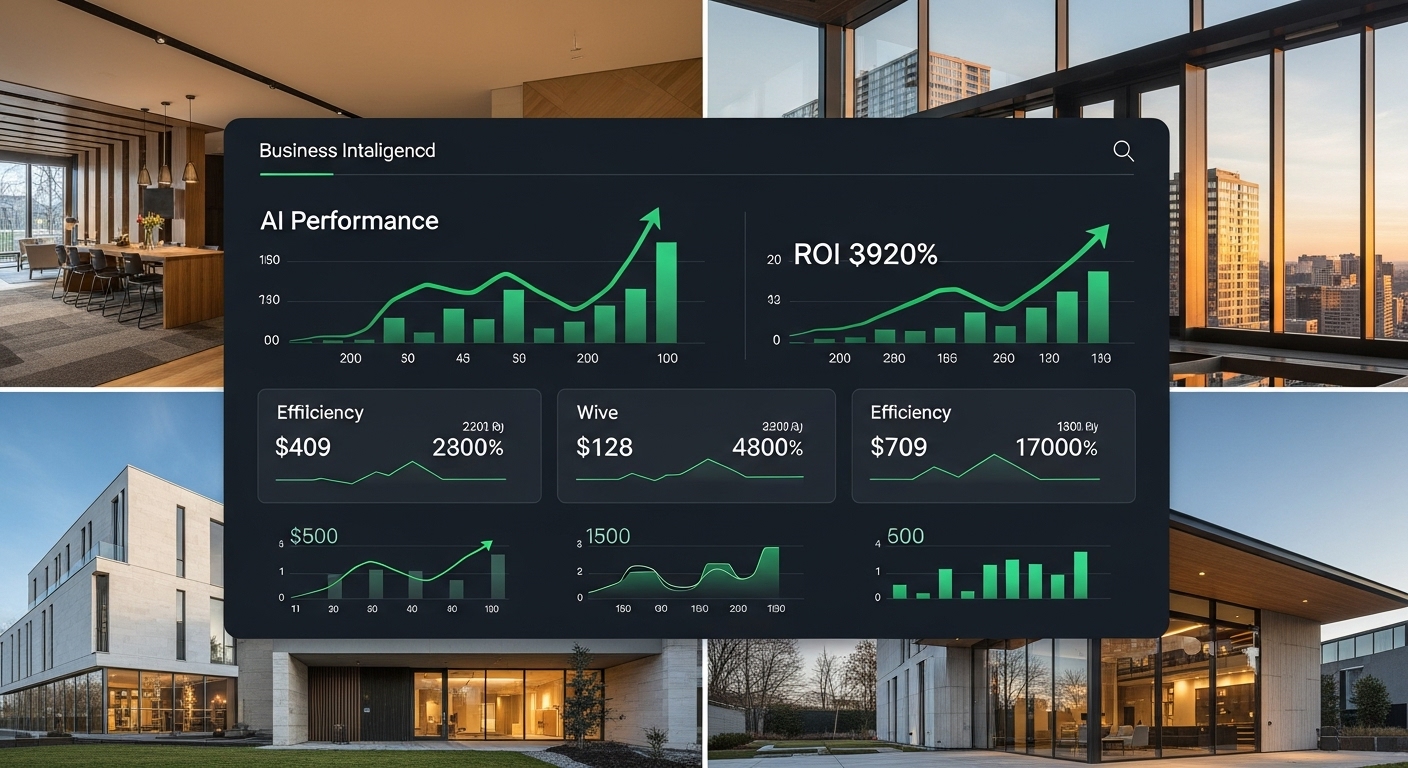
Overcoming Implementation Challenges
Team Resistance and Change Management
The biggest barrier to AI adoption isn't technical—it's human. Address resistance through:
Gradual implementation: Start with tools that enhance rather than replace existing workflows
Success story sharing: Highlight early wins and positive outcomes
Continuous training: Provide ongoing education and support
Incentive alignment: Tie bonuses and recognition to AI adoption and performance improvements
Data Quality and Integration
AI systems are only as good as the data they process. Ensure success through:
Data standardization: Establish consistent data entry and management protocols
System integration: Connect AI tools with existing software platforms
Quality monitoring: Implement regular data audits and cleaning processes
Security protocols: Protect client and business data with enterprise-grade security measures
The Competitive Moat: Why AI Adoption Creates Lasting Advantage
Builders who successfully integrate AI don't just improve efficiency—they create sustainable competitive advantages that become increasingly difficult for competitors to replicate. As your AI systems learn from each project, they become more accurate, more predictive, and more valuable.
Consider this: a builder with three years of AI-powered project data can predict client satisfaction issues with 89% accuracy, while competitors still rely on post-project surveys. That's not just an operational advantage—it's a fundamental business model transformation.
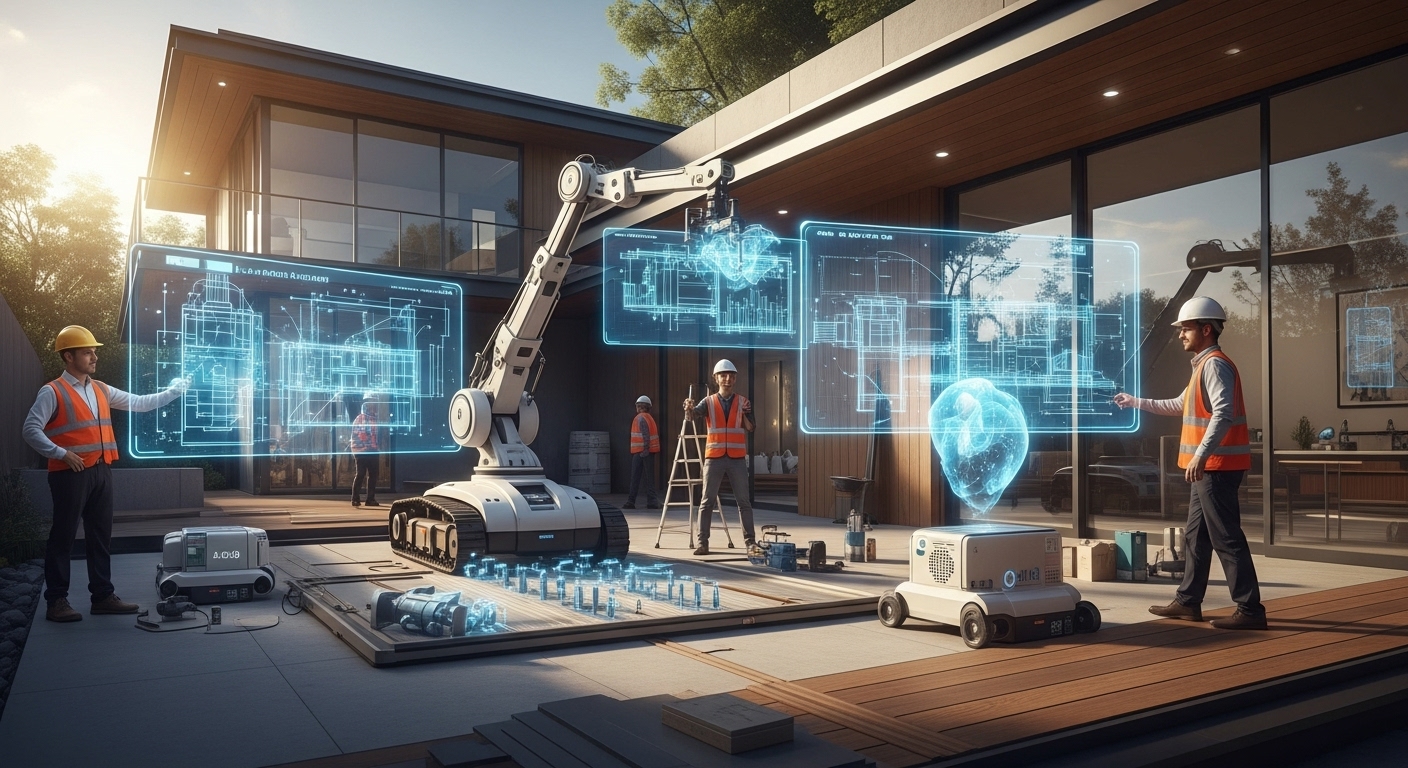
The luxury home building industry is entering an AI-driven renaissance. Builders who embrace this transformation now will define the industry's future. Those who wait will spend the next decade playing catch-up to competitors who moved first.
Your clients expect luxury experiences that anticipate their needs, exceed their expectations, and deliver flawless execution. AI integration isn't just about improving your operations—it's about delivering the impossible: perfect homes, on time, on budget, every time.
The question isn't whether AI will transform luxury home building. The question is whether you'll lead that transformation or be left behind by it.
Ready to build your AI-powered future? Contact 100XBuilds today to develop your custom AI integration roadmap and join the builders who are already dominating tomorrow's market. Your competitive advantage starts with your next decision.
